Pro Guide: How to Pack for Bikepacking Adventures
Drawing inspiration from ultralight backpacking and climbing gear, bikepacking is the younger, faster, and more efficient cousin of bike touring. Where bike touring can be restrictive, requiring a suitable bike with mounts for a rack and panniers, bikepacking embraces freedom. Freedom to use any bike, freedom to travel far or stay close to home, to rough it in the wilderness or to keep it tidy and enjoy the comfort of a hot shower in a hotel. It’s as much of a mindset as it is an activity and there are very few rules. It can be hard to know where to start. So that’s why we’ve built this guide on how to pack for bikepacking adventures and interviewed some pros and experts along the way.
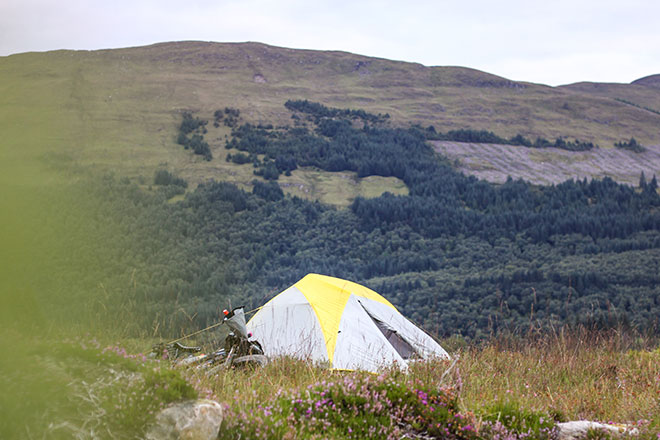
It’s more than strapping bags to bikes
Different riders, bikes, terrain, and weather mean no two rides are the same. A single bikepacking trip can span a wide array of conditions. Bikepacking bag design has to follow the same philosophy as bike design – utilizing the best materials, chosen for their performance, alongside geometry that complements the terrain and riding style, and the most suitable components.
Packs for road riding prioritize storage space and even weight distribution. Mountain bike bags are more abrasion resistant and work around suspension and moving components. Racing-focused packs are more streamlined and focus on weight and efficient construction, rather than extra features. Focusing on your preferred riding style and ensuring the packs fit your favorite bike should guide which style you choose. Above all else, make sure the packs are waterproof and durable – nothing ruins a bikepacking trip faster than wet gear.
In the bikepacking world, seam welding tends to be the gold standard for waterproofing. Bag shapes and designs are difficult to tape and stitched constructions usually lead to water seeping in under sustained rain. Waterproof zips and roll closures are common and reliable ways of keeping water out of packs. But look closely at small details such as zipper garages and flaps of material that divert water away from openings.
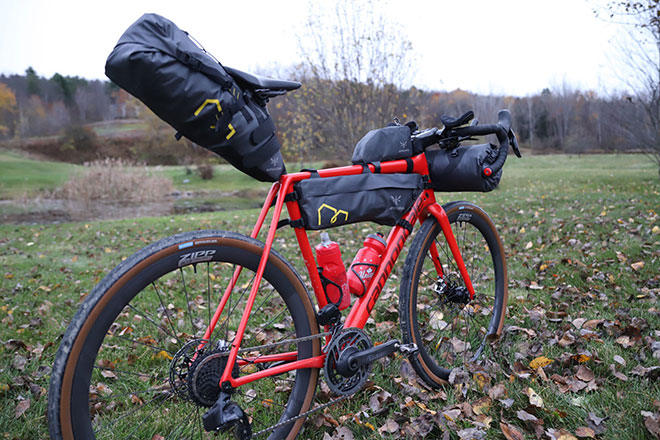
Achieving perfect balance
The most common spaces used for bikepacking bags are found underneath the saddle, inside the frame triangle (as well as on top and below) and mounted directly to the handlebars.
It can be tempting to pick one space and fill it with the biggest bag possible to carry everything. But this is a surefire way to make your first bikepacking trip an uphill battle. Your goal should be to equally balance the weight of your gear around the center of gravity of your bike. Balancing five kilos off the back of the saddle will seriously alter the way you know your bike to handle. Whereas two kilos in a saddle bag, balanced by two more on the handlebars and the rest of your gear in a frame bag will result in a much more pleasant ride.
As you ride more with bags strapped to your bike, you’ll develop a system for what goes where. But there are some general rules of thumb that can help guide your packing system until you perfect it:
Saddle bags are ideal for spare clothes and a warm down jacket; things you need after a day of riding. This is also a decent spot for a sleeping bag if it can’t fit in the front.
Frame bags are great places to store heavy items: a water bladder, stove, fuel, tent stakes, food, extra snacks, and gear that can remain static whilst riding.
Handlebar bags are a great space for a small tent, mattress, and sleeping bag. Bungee attachments and accessory pockets provide useful space for storing snacks, camera, documents, and things you need easy access to.
Top tube bags are for items you want easy access to while riding, such as a phone, gloves, snood, warm hat, portable batteries, energy bars, and snacks.
Food pouches/stem bags are ideal for stashing food, sunglasses, gloves, or water bottles.
Fork bags are ideal for storing compressible items such as sleeping gear and extra clothing.
These spaces differ between bike types, however. Road, gravel, mountain, and commuter bikes are all completely different shapes and will favor different types of packs. For example, few road bikes have fork pack mounts.
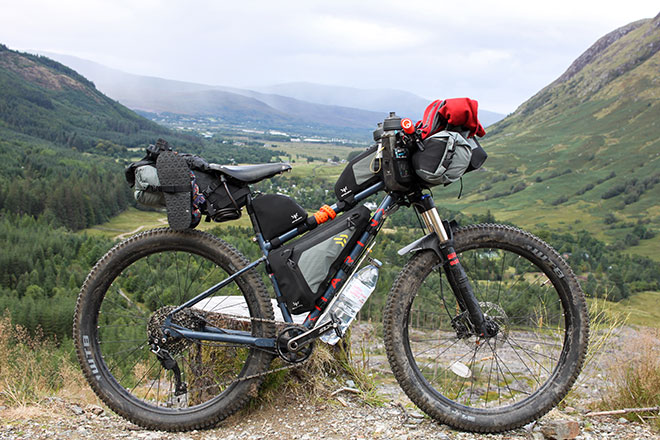
Less is more
While it is possible to attach a bag to every single part of your bike and carry every creature comfort imaginable, bikepacking is about maintaining ride feel. Much of the challenge (and fun!) is stripping your kit list back to just the essentials. Doing away with the clutter surrounding us in daily life.
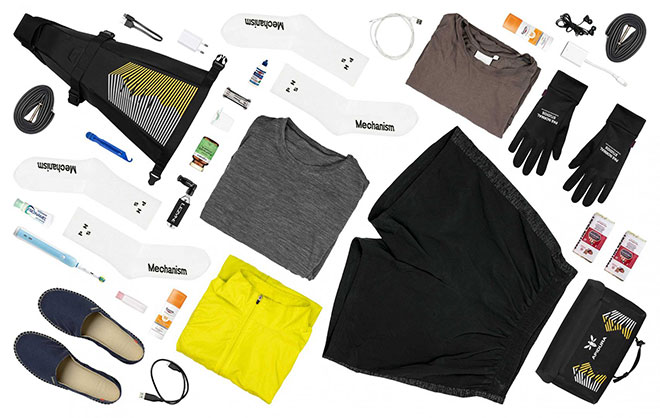
You’ll be surprised how little you need. Joe Rass-Court recently rode 1,800km across Colombia with barely more than many would take for a day ride. With 36,000m of climbing, he wanted the weight as low as possible, fully embracing the ‘less is more’ mindset:
“For longer tours, there’s a temptation to pack more. But heavier bikes are less fun to ride and I wanted to focus on enjoying my time both on and off the bike as much as possible, riding hard during the day and enjoying staying in hotels at night. With so much climbing, keeping the weight down was extra important and my kit added just 2.5kg to my setup, despite containing all my clothes and spares.”
Even Jenny Graham, who set the Guinness World Record for the fastest circumnavigation of the world by bike, stripped her kit back to the essentials. She carried just one small luxury for her four months on the road:
“I REALLY love having a lip balm with me. I don’t need it but it’s a wee bit of lush in a grim headwind!”
While it’s easy to do away with a few spare layers or electronics, tools and spares is one place where the balancing act between ‘just enough to get by’ and ‘ride-ending disaster’ is particularly tough. Part of the bikepacking mindset is self-support and being able to fix your bike trailside to finish your tour. But carrying bulky items (like spare tires) that end up being unused can be extremely frustrating.
Jenny Tough, Apidura ambassador, explains:
“On a short ride, I just carry my little saddle tool bag with a tubeless repair kit and small multitool. Worse than that, I’ll walk. On a longer day ride, I’ll usually take a half-frame bag with a pump, tube, multitool, tubeless repair kit, chain link and tool, chain wipes, spare cable (it’s in the bag already, I’ll probably call for a lift if I actually need it!) and maybe a battery and charging cable for my phone. On an extended tour/race, the only addition to the above would be chain lube, two tubes instead of one, and on the Silk Road Mountain Race I wrongly carried a spare tire the whole way around.”
Be prepared
One of the side effects of embracing the adventure spirit of bikepacking is finding adventure on your doorstep. Realizing that everyday rides can be made more special by staying out a little longer. Being more flexible. And simply being prepared for anything you might encounter when you take the road or trail you’ve always ridden past and thought, “I wonder where that goes.”
Josh Kato: “The option of just getting on the bike and going is what I love. Having a nice roomy frame pack gives me so many options as what to carry without having to strap anything else to the bike or myself. Being prepared for the unexpected is key for me. Also, if I decide to make my day ride into an impromptu overnighter I like to know I have an extra layer of clothing to bed down in.”
Consider keeping some bags on your bike permanently and see where the freedom and flexibility they bring take you. Bikepacking might seem big and daunting before your first tour. But after a few longer rides and overnighters, you’ll quickly get into the swing of things and figure out what works for you.
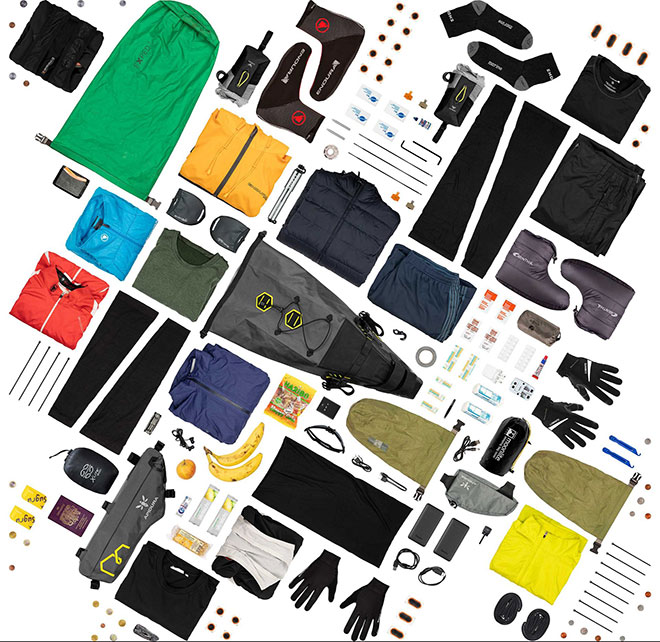
What to Pack
Well, everyone is different. But here’s a great packing list from Jenny Graham. This is her round-the-world proven gear and curated for a weekend or slightly longer bikepacking trip.
Terranova Moonlite bivvy
Cumulus X-Lite 200 sleeping bag
Klymit Inertia X-lite short mat (discontinued – nearest equivalent)
Endura drop seat bibs
Endura BaaBaa socks
Endura cycling jersey
Endura Pro Adrenaline Race gilet
Endura down jacket
Endura MT500 waterproof jacket
Endura leg warmers
Tire boots (sections of old tire)
Puncture repair kit
Tire levers
Inner tubes
Pump
Gorilla tape
Cable ties
Anker Battery pack
USB cables
Sunglasses
Endura arm warmers
Multitool
This article was written by Ross Arnold, product designer at Apidura.





 Carry Awards
Carry Awards Insights
Insights Liking
Liking Projects
Projects Interviews
Interviews
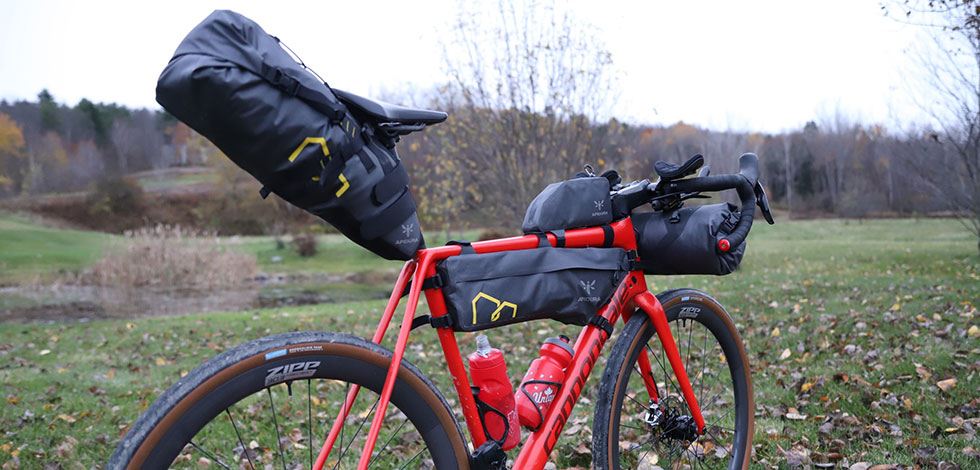











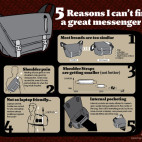
5 thoughts on “Pro Guide: How to Pack for Bikepacking Adventures”
Comments are closed.